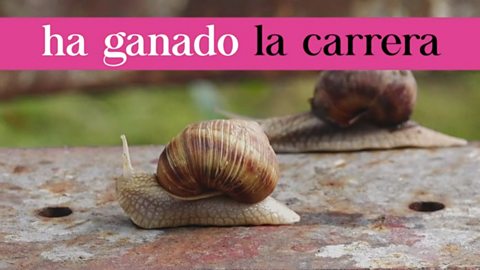Grammar
Nouns and articles
A noun is a naming word used for a person, thing, place or idea. In Spanish, all nouns are either masculine or feminine. The word for 'the' or 'a' changes depending on the gender of the noun and whether it is singular or plural.

Adjectives
An adjective is a word that describes a noun. In Spanish, adjectives have different endings depending on whether the word they are describing is masculine, feminine, singular or plural.

Adverbs
Adverbs are words that add meaning to the verb and describe actions. They tell us when or how something is happening or where the action in a sentence takes place.

Pronouns
Pronouns are used to replace nouns. Pronouns are usually shorter and quicker ways of referring to a noun to help make sentences less repetitive.

Present tense
Use the present tense to describe what you do and what things are like. The present continuous can be used to talk about what is happening now.

Preterite tense
Use the preterite tense to talk about completed actions at specific times in the past. The preterite is used when the past action has a definite beginning and definite end.

Imperfect tense
Use the imperfect tense to talk about repeated or continuous actions in the past. The imperfect is used when the past action doesn鈥檛 have a definite beginning and definite end.

Perfect tense
The perfect tense is used to express or describe actions that have happened in the recent past. It has two parts that always need to be used together.

Future tenses
Use the immediate future tense to talk about what is going to happen. The future tense is used to express what will take place.

Conditional tense
Use the conditional tense to talk about intentions and ambitions that may happen in the future. The conditional is used for polite requests and to express phrases using 'would', 'could' and 'should'.

Other tenses and verb forms
Add variety to your written and spoken Spanish by using other tenses and verb forms. Develop your language skills and improve comprehension by recognising and practising a range of structures.

Negatives
Negative words can be used in different ways in Spanish. Construct negative sentences by using 'no' and other negative words and phrases.
